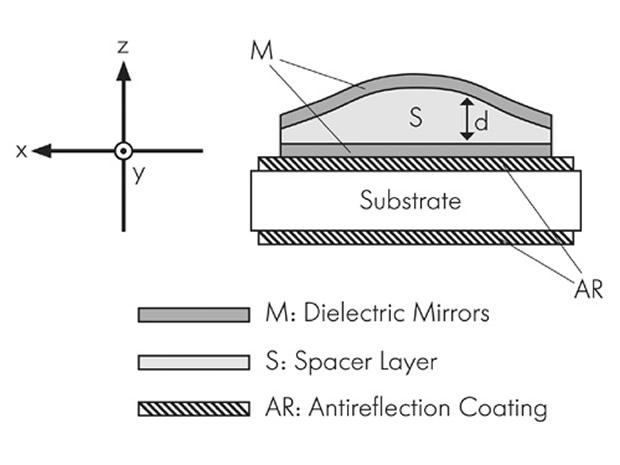Gaussian mirrors produce high quality laser beams
Gaussian mirrors, or variable reflecting mirrors, are characterised by a degree of reflection which slopes radially from the centre of the optic in a Gaussian distribution. These mirrors are used in unstable resonators to produce high quality laser beams with low divergence at high pulse energies. In frequency-doubled systems they are used to achieve a greater pump efficiency. Gaussian mirrors are extremely stable and suitable for high power applications.
These optics are based on the principle of a Fabry Perot interferometer, with a position dependant mirror spacing. Dielectric coatings with a defined reflectivity value as a function of radius are generally monochromatic. The Gaussian profile is only valid for a single specified wavelength. Gaussian mirrors are manufactured with high precision, usually to customer specification by LASER COMPONENTS, one of the few companies worldwide offering this type of mirror.

Assembly
The working principle of Gaussian mirrors is based on a Fabry Pérot interferometer with a fixed mirror spacing – a so-called etalon. In this way, the phase shift caused by the coating is minimized. Also, the wavefront distortion of coherent radiation is reduced.
The image here shows the cross-section of a coating that exhibits a gradual change in the reflection R(r) for monochromatic light depending on its position.
A so-called distance layer S with varying thickness d is surrounded by two identical mirror layers M. If d is an even multiple of l/4, the system is transparent for the wavelength and does not exhibit a reflection for l. If d is an odd multiple of l/4, the total reflection is determined by the reflection of the mirror layers M.
Special substrates are used for Gaussian mirrors. LASER COMPONENTS offers meniscus, plano convex, and other custom-made substrates.


